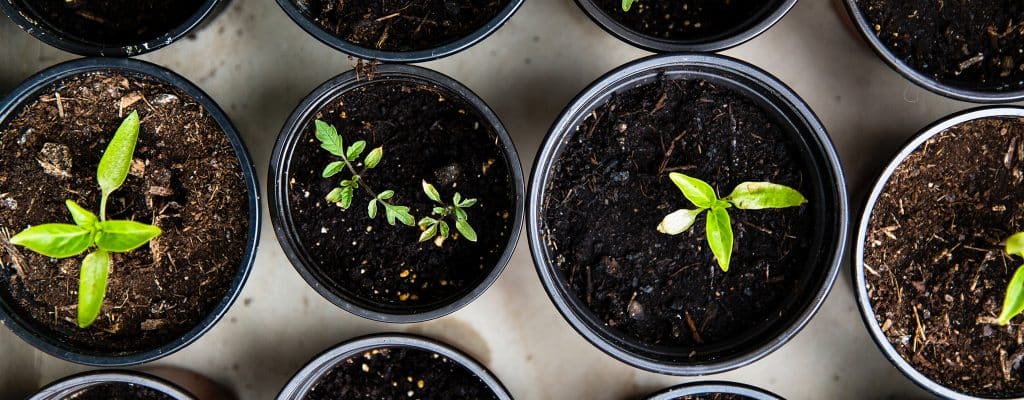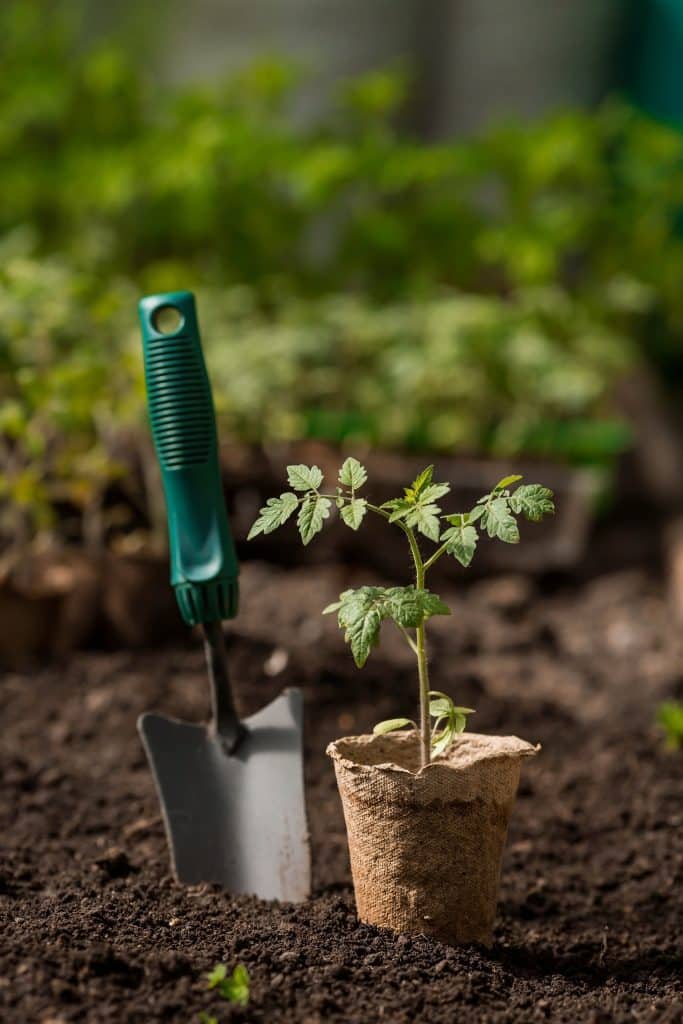Growing your food at home has many benefits, such as cost savings, and you’ll know exactly where your food is coming from. But did you know that growing an organic fruit and vegetable garden has even more benefits than growing a non-organic garden?
Starting an organic garden can help preserve the wildlife around you, taste and nutrition of your food and limit your exposure to synthetic pesticides and fertilizers, and it’s pretty easy to get started. Here’s our guide to starting your first organic fruit and vegetable garden.

Step 1: Preparation
When to start preparing your organic garden
Spring is the best time to start preparing for your organic garden, but you must first know the type of fruits and vegetables you wish to plant. Some vegetables thrive in cooler weather, like kale, which can be planted early, and some thrive in hot August weather.
Knowing what fruits and vegetables you want to plant will determine your planting schedule, so you can choose when to start prepping your organic garden.
Start small the first year
A common mistake new gardeners make is trying to create a robust garden on their first try. It’s always best to start small and choose the produce you use daily. You can also prioritize planting fruits and vegetables that are heavily sprayed with pesticides, such as leafy greens. Most importantly, choose easy-to-grow crops, especially if it’s your first ever at-home organic garden.
Buy the right equipment
Only a little equipment is needed for your organic garden, but preparing well in advance is always good. You will need:
- organic soil
- organic seeds
- organic fertilizer
- gardening gloves
- hand trowel
- pruners to trim
- a rake to smooth the surface
- watering can or hose
- row cover
- and a system for starting your seedlings
For first-time gardeners, you can buy seedling kits on amazon, such as this burpee seed starting kit.
Step 2: Preparing the Soil
The best soil for organic gardening
An essential component of your organic garden’s soil is its organic matter, such as manure, peat moss or compost. If you already have a compost pile, this can be one of your best soil sources for your garden, as compost has an abundance of microorganisms that keep plants full of nutrients.
If you don’t have a compost pile, you can buy bagged compost from garden centres. Once your soil is set in your dedicated gardening area, add 1-2 layers of mulch to avoid weed growth. Organic mulch resembles cocoa hulls, straw, lawn clippings, or newspaper.
Organic fertilizers
Organic fertilizers are naturally occurring compounds that improve the health of the soil. They are made from organic waste matter or by-products and release nutrition to the soil, which ensures healthy fruits and vegetables. Some organic fertilizers that you can add to your organic garden are manure, worm castings, peat, seaweed, bone meal, blood meal, bat guano, and compost.
Step 3: Understanding Seeds and How to Transplant Your Seedlings
Growing starts with the seed. Different plants thrive in various growing conditions, so step 1 of choosing your seeds is determining what grows well in your area and at what time of year to plant your seeds.
Starting with seedlings requires conditions to ensure your seeds will thrive. Many beginner gardeners start their seedlings indoors to avoid unwanted weather conditions and transplant them after a few weeks of growth.

Choosing already-grown transplants
If you choose to buy transplants, look for strong plants with no yellowing leaves or signs of disease, and always go for certified non-GMO and try to purchase organic.
How to make a sowing for your seeds
Sowing is the simple step of planting or transplanting your seeds directly into your garden bed. The best way to make sowing for your organic garden is to prepare your garden bed by removing any mulch or dead leaves.
Then, push a small hole into the ground, and if you are planting directly into your garden bed, push the seed twice as deep as the seed is wide and plant a hole every 12” apart.
If you are transplanting, stick to the same technique: planting your transplants every 12 inches apart and dig a hole twice as deep as the roots.
As your seeds grow, remember that you may need to thin the seedlings out to make space for the strong plants to thrive.
Step 4: Planning and Planting Your Garden
Make a plan for your organic garden
To plan a successful organic garden, start by selecting the area you want to use and sketching out a layout of your garden. Consider the plants you want to grow, their sizes, and the space each will need.
Explore your garden site
You’ll need to take the time to understand your surroundings, the planting site, your soil, your local climate and growing conditions. Plants grown in unfavourable soil conditions can become stressed, making them more susceptible to infestations.
You can get a soil test to determine its pH level and nutrient content, which helps you decide what organic fertilizers or amendments you need to create a healthy plant-growing environment.
What plants can cohabit?
When planning your garden, it’s also crucial to consider companion planting. Some plants are compatible while others aren’t; for example, carrots and tomatoes are good companion plants and grow nicely together. Also, consider planting companion herbs with your organic vegetables to deter pests, create shade and improve plant and soil health.
Step 5: Watering & Irrigating Your Plants
When to water your garden during the day
The best time to water your garden is in the early morning or late afternoon, allowing the water to soak into the soil before evaporating. How often to water depends on various factors, such as the climate, soil type, and plants in your garden. Continually monitor your soil moisture levels and adjust your watering schedule accordingly.
How many times to water in the week
If you live in a climate that gets rain, think less is more when watering your garden. For seedlings, water daily. For plants budding or blossoming, once a week if they are in a garden bed, and for plants in the ground, up to 3 times a week. These recommendations should also factor in the rain.
How to get good irrigation
Irrigation can come in many forms, such as rainwater, sprinklers, and watering can. It will depend on the size of your garden and how much drought your plants are exposed to. If your garden is large in size, it might be beneficial to buy soaker hoses or sprinklers. Also, add more mulch, which will help keep your garden bed moist.
Step 6: Protecting your plants without pesticides
Keeping predators away naturally
Growing an organic garden requires non-invasive weed removal and pest control. Planning an organic fruit and vegetable garden that has compatible plants is a great place to start for pest control. You can also:
- Add beneficial insects, such as ladybugs, that eat aphids and mites
- Pinch off dead or infested leaves
- Add birdhouses near the edge of your garden so they can eat the pests and bugs
- Sprinkle cinnamon on ant hills to control ant infestation
- Plant fresh herbs such as lemon balm to keep pests away
And be okay with a small number of pests. Accepting that insects and animals may eat some of your garden helps you live in harmony with the ecosystem that surrounds you.
Removing weeds
The trick to a weed-free garden? Consistency.
Most weed killers contain harmful chemicals that are detrimental to your organic garden, so if you want to kill weeds naturally, here are some tips for maintaining cleanliness in your garden without having to manually remove weeds every single day:
- Regularly eliminate weeds from your garden at the root to ensure they don’t spread
- Mulch, like straw or pine bark, will cover and suffocate weeds, making it hard for them to grow
- Solarizing your garden bed with plastic on the areas you want to protect to heat the ground and kill the seeds
- Vinegar, when applied frequently, can be beneficial in removing weeds
Step 7: Harvesting & Closing Your Garden for Winter
Just because your crops aren’t yielding fruit, vegetables, or herbs anymore doesn’t mean you can set and forget your garden until next year. If you want to set yourself up for success next spring, here are some things to consider when closing your garden down for the winter:
- First, harvest everything salvageable
- Try to save as many seeds as possible for next year
- Cut down standing plants
- Or, pull the plants out by the root, except for beans and peas, as their roots help manage nitrogen levels in the soil
- Pull out garden weeds
- Move any annuals indoors near a window
- Till the soil
- Lay down mulch
Organic gardening at home not only promotes healthy eating but also fosters a sustainable environment for future generations. Visit Kiju.ca to learn about all things organic!
